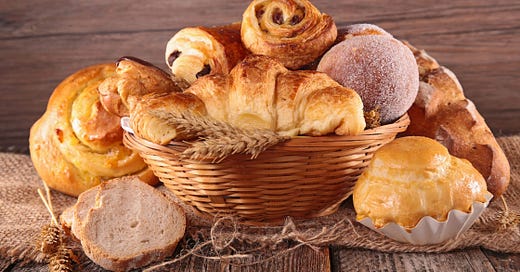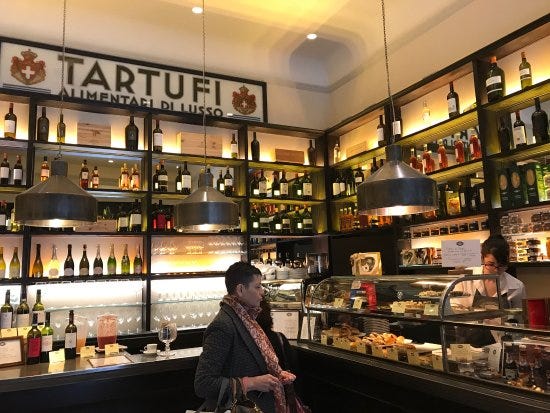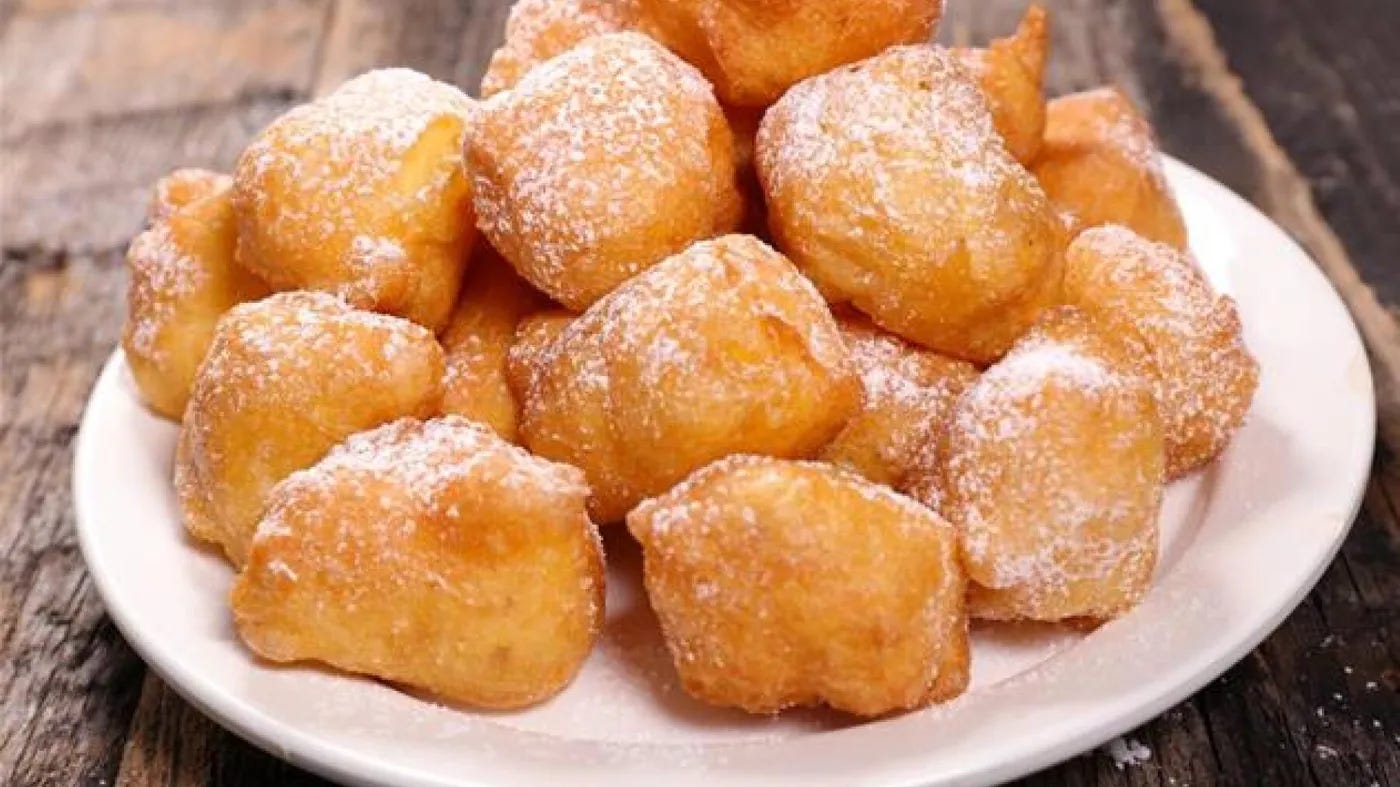Call anything “French” and you imply a superiority in taste or style; French lace is the most delicate, French perfume the most complex, and so on, through French cuffs and French kissing to French pastry, where the decision is unanimous. To the croissant, the tarte aux pommes, the macaron, financier and millefeuille, nothing compares.
My father was a pastry cook by profession. On his only visit to Europe, I accompanied him, in his new beret, to our local patisserie. The fruit-decorated gateaux, multi-coloured macarons and Saint Honorés reduced him to awed silence. He might have been an old country priest, rendered speechless by his first glimpse of Notre Dame.
When I first arrived in Europe, I shared his astonishment at the variety and…well, strangeness of the cakes and breads. Australian pastry doesn’t vary. There is no Queensland loaf or South Australian cheesecake. From one end of that enormous continent to the other, cake shops offered the same rubbery sponges, glutinous jam tarts, and the nation's sole original contribution, the Lamington, a cube of stale cake soaked in chocolate syrup and rolled in desiccated coconut.
My first experience of French baked goods took place, improbably, in a campsite near Mulhouse, close to the point where France, Switzerland and Germany intersect. Each morning, a small van drove up, loaded with fresh bread and pastries. I recognised croissants, though I’d never actually eaten one, but the other pastries, in particular a plump sweet roll with the consistency of a hamburger bun, were new. Nothing, then, prepared me for the first bite into a pain au chocolat , and that encounter with the vein of dark chocolate that transected its heart. Bread and chocolate! Who but the French would have thought of that?
From then on, I couldn’t pass a patisserie without stopping to browse. Lyon introduced me to the croissant aux amande, a croissant stuffed with almond paste and garnished with flaked almonds. Gaufres – waffles – came dusted with icing sugar and oozing chocolate-hazelnut Nutella, Europe’s answer to peanut butter. The spread also featured in crepes, though the English “pancakes” hardly does justice to their variety. Some were doused with honey or spread with Nutella, others filled with egg, ham, cheese, or peppery north African merguez sausage. Not to mention socca, a crepe of chickpea flour found only along the Mediterranean, eaten hot from the oven with a sprinkling of white pepper.
In Alsace and Switzerland, we learned the magic of bread with cheese – particularly melted, in fondue and raclette. Then there was Alsatian flammekueche, a tart covered in thinly sliced onion, pieces of smoky bacon, and cream. Venice introduced us to pizza; not the slabs of soggy bread and rubbery cheese I knew from Australia, but the authentic local version; paper-thin dough, edges still crisp, undersides floury from the brick oven, surface spread with home-made tomato sauce and molten mozzarella.
Greater surprises came, however, in Florence. When friends asked “Do you like tartufo?” , I could only think of a frozen dessert of the same name, made from vanilla ice cream rolled in chocolate sprinkles . Our first visit to Procacci on via Tornabuoni put us straight. Tartufo meant truffle; the dessert was a clumsy attempt to imitate the look of the knobbly black tuber in its natural state. Procacci’s panini al tartufo were tiny soft rolls spread with truffle butter – another first.
Procacci, Florence.
Returning to Paris both better educated and fatter, I soon realised that, for all the virtuosity of German and Italian pastry-makers, none compared with France. The country that could give birth to a patissier on the order of Marie-Antoine Carême didn’t need to look over its shoulder; the second-place runner wasn’t even in sight.
If Carême invented nothing but choux pastry, his immortality would be assured. Made from flour, melted butter, eggs and water, it contains no yeast or baking powder. In the oven, water becomes steam, inflating the dough into a crisp, almost weightless shell, ready to accept chantilly, chocolate sauce, ice cream, even cheese.
In 1910, to celebrate the epic bike race to Paris from France’s furthest western point, a chef filled choux with praline cream to create le Paris-Brest. Another perched a small choux puff on the larger one, filled both with cream, frosted them in caramel and, since the result resembled a nun in her habit, called them Religieuses - nuns. Whereupon a competitor created a single sphere, also cream-filled, and christened it Pette de nonne – a nun’s fart. Many countries make great pastry, but to be funny with it? Now that takes flair
Pettes de nonne.







Most of the items produced by pastrycooks of my father's generation were versions of English recipes, often adapted to the use of cheaper ingredients. "Tricks of the trade" included raspberry jam liberally diluted with cheaper apple pulp, something called "Parisian Essence", aka "Blackjack", that coloured and flavoured otherwise dull fillings, Lamingtons that used up stale cake, and of course meat pies with the filling stretched by adding yesterday's chopped-up pies, pastry and all.
What a wonderful description of French pastries! It just makes me want to come back and try MORE! ❤️